When a Maltese Dislikes People – Reacting Badly to People While Out on Walks
Overview

A Dog’s Bark is His Voice
Before we dive into this further, it’s important to understand that a dog’s barking, growling, and other vocalizations are their voice. It is how they speak. And being emotional creatures, it is not realistic to expect a Maltese to never ‘talk’.
While there are ways to train a Maltese to better understand situations, and react with a lower degree of reactionary behavior, do not expect your puppy or dog to be overly calm without any reactions to the world around him.
Are some dogs unbelievably mellow, without a care in the world? Yes, but some are not and they are perfectly normal dogs too, acting as canines do.
Top 5 Reasons a Maltese Will Dislike People Seen Outside of the Home
1. Other animal triggers
– In some cases, it is the scent of another animal on a person that triggers a negative or reactionary response from a Maltese.
Pet owners carry lingering scents of their animals. You may not sense that your neighbor is emitting the scent of his dog, cat, ferret, or other pet. But, to a Maltese, that has exceptional scenting abilities, the odor can be very strong.
If your Maltese’s behavior towards just some people is puzzling you, you may want to ask if the person on the receiving end has pets at home.
2. Physical attribute triggers
– A dog may not like just certain people, and this may be based off of certain physical traits... this can be height, skin color, age... or even color or type of clothing (work vests, hats, etc.).
This happens quite often with rescue dogs (certain people may remind them of past abusers), but this has been seen with dogs with no past history of neglect.
3. Fear
– It can be fear that triggers barking, growling, or other behavioral signs of acting out. This said, most Maltese will cower, shadow their owner, and/or whine when afraid of any certain element.
If a dog is barking like mad at a stranger out of fear, this may be related to irritating and loud noises (lawn mower, etc.) or they may have a larger dog alongside them.
4. Sensory overload
– Canines have incredible senses; when out in the yard or out for walks, not only are they seeing everything that’s happening, but they are also hearing far more noises than your human ears can pick up… And, they are smelling all types of scents.
For some Maltese, instead of picking up a scent here, or seeing a person there, there is a barrage of triggers along the walking route. And this may be too much stimulus.
5. Protection and defensive canine instinct
– If a dog is reacting to someone who is on or near the property, this brings in an additional element of canine instinct for a dog to alert his owners to possible danger, and send out warnings to the offender to stay away.
Should You Train for This?
First, you’ll have to decide if you truly want to train your Maltese for this. On one hand, a dog's bark is his voice... and it's okay sometimes for a dog to be vocal to try and relay his feelings.
On the other hand, if you find this very disruptive, or if you see that getting worked up affects your Maltese in a negative way, you may indeed want to implement training.
There are 3 parts to this. First, you’ll want to know what to expect, you will need to be prepared, and then you’ll be able to move onto the training.
Expectations
As we mentioned, all dogs bark, so the goal of having a dog that is perfectly quiet and never reacts will rarely come to fruition.
For disruptive behavior while out on walks, your realistic expectations should be that your Maltese does let out a few barks, but continues onward by your side.
Prepping
There’s a few things that will be needed.
1. Leash and harness.
Training involves having your dog in position and keeping him there. The safest way to do this is with a harness.
A collar can put undue pressure and stress onto the neck, which can in some cases contribute towards collapsed trachea
and other neck injury.
A harness gives you better control, more authority, and does this in a safe fashion.
With the leash, you will want a short 6-foot leash, or a retractable leash. Your dog should not walk ahead of you. He should be in heeling position, which means to your left side.
2. Training treats.
Training treats are an essential part of all types of training. And when you want to teach your Maltese to behave nicer toward people that the dog dislikes, there’s going to have to be some strong motivation.
The treat should be:
- Something that is not offered at any rate - If you’ve found a great brand of treats, and these are normally given, try a different flavor than the ones you typically offer.
- Extra delicious – While a dog may take anything you offer, you’ll want training treats to be especially flavorful. Look for those with extra boosts of flavor like lamb, rabbit or salmon.
- Moist treats often work better than dry ones.
- Properly sized – Reward needs to be fast and immediate. If the treat is too large, a Maltese will need to take pause to chew on it. He may even want to lie down to gnaw away. So, be sure that it is sized rather small to mark the exact moment of cooperation and good behavior.
- Held to the same standards as the kibble you give. Every bite counts. Steer clear of any treats that have additives, chemical preservatives, high filler count, or are made outside of the USA.
Below are our recommendations for a great harness that fits even the tiniest Maltese, a 6-foot lightweight leash, and effective training treats. If you do not see the images, try a refresh. And on mobile, you may need to turn your screen horizontal to see all 4.
Training for Behaving Nicely While Out on Walks
Now that you know what you want to accomplish, and are prepared, it’ll be time to start doing things a bit differently.
1. Plan the walking route.
For Maltese that react to a lot of triggers, it is best to avoid as many as you can. A constant bombardment of people is too much to train for, and too much for trigger-sensitive dogs to handle.
If your typical walking route has lots of people along it, consider a new spot. Later, if your Maltese is able to better handle himself, you may be able to revisit those busy areas.
2. Assume your role as leader. When you head out, it’s important to realize that you are the leader. As leader, you choose the pace, you decide on direction, and you have the final say in regard to what should and should not warrant a reaction.
Dogs can sense weakness. If you feel that you are helpless as your Maltese heads out in front of you… and as he barks like crazy at this person and that, you are not acting as leader… and instead are an observer.
3. Have your Maltese on leash and harness.
As mentioned, these will help you be in control and will keep your Maltese safe for the training.
Your dog should be to your immediate left side. Not ahead of you, and not behind you.
4. Have your chosen training treats
in a small zipped plastic bag, and in a pocket that is easily accessible.
5. Begin the walk and when you come upon a person:
- Do not tense up. Your dog will be able to sense this and it will put him 'on guard'.
- Keep walking.
- At the first bark, say, ‘Okay’, in a firm voice. This will give your Maltese acknowledgement that you hear him.
- For any future barks, you will ignore these. Keep walking while keeping your Maltese in place beside you.
- When the barking ceases, walk a bit more until a count of 10, reach for a training treat, slow down the walk enough to palm it, and offer it while giving praise.
Don’t worry that you’ll be rewarding for disruptive behavior that happened. Dogs relate reward to whatever is happening at the exact moment that it is given to them.
For every 2 minutes in which there is no barking, jumping, or acting out (people or not), give a treat.
Do not take breaks or full stops to do this. It is the act of walking calmly that should be rewarded.
As your walk continues, 2 things will happen:
1)
Your Maltese will see that barking at strangers and people along the way brings about zero results. The behavior did not cause the walk to be paused. And it did not cause you to react in any way.
In other words, the Maltese’s barking and reactions
are not being recognized. This makes a dog to start to wonder if his behavior is warranted… Perhaps all that hoopla was for nothing? Yes, it was. And soon your Maltese will learn this.
2)
Walking in a calm and quiet manner is bringing about favorable results. As your Maltese displays good behavior, he is receiving praise and being offered tiny burst of flavorful treats as reward.
Canines are able to work though thought processes. They learn which behavior brings about the most beneficial results. So, taking walks in this manner will teach a dog which actions lead to the walk being more enjoyable for them.
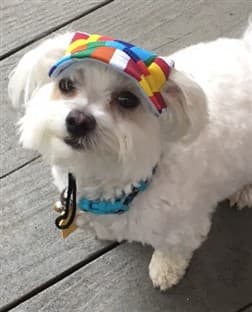
Extra Tips
1) Don’t avoid walks.
Daily exercise
is important to keep a dog healthy. It’s vital for maintain good physical health, and it helps a dog release pent up energy, which often leads to better behavior at home.
In addition, if you avoid walks you’ll be missing the opportunity to train your Maltese to handle them in a better way. If anything, walks should be increased, not decreased.
2) Assume leadership at all times. While we covered the importance of taking command while teaching your Maltese to not react so much to people along the walking route, you’ll want to assume your leadership role throughout the day as well.
One way to help accomplish this is by always expecting a ‘sit’ before placing down meals or giving out snacks.

-min-450x169-1920w.jpg)
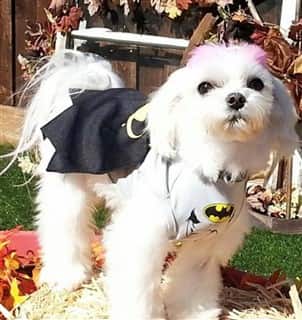
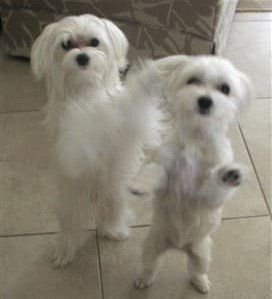
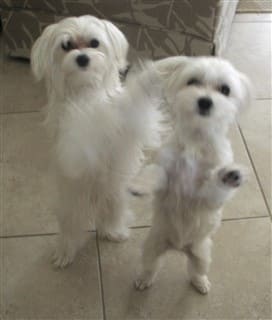
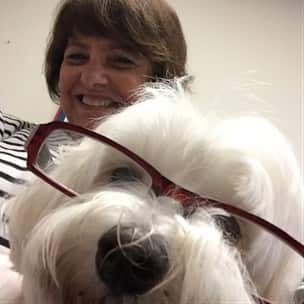


-min-180x187-1920w.jpg)